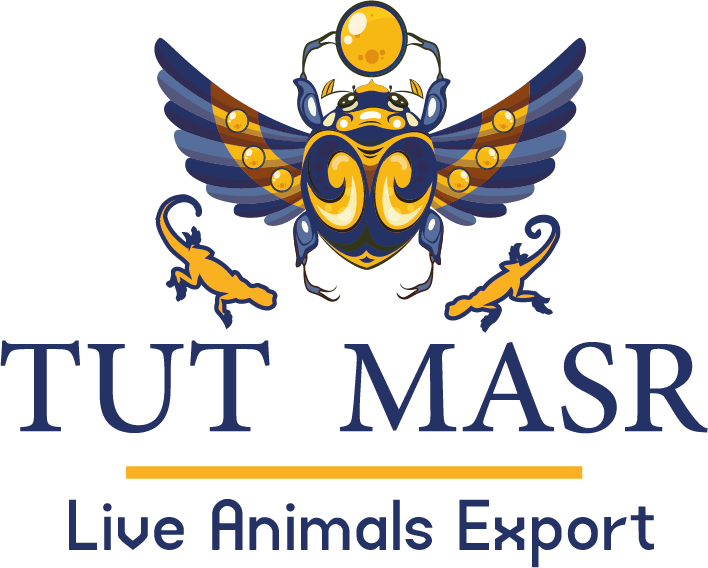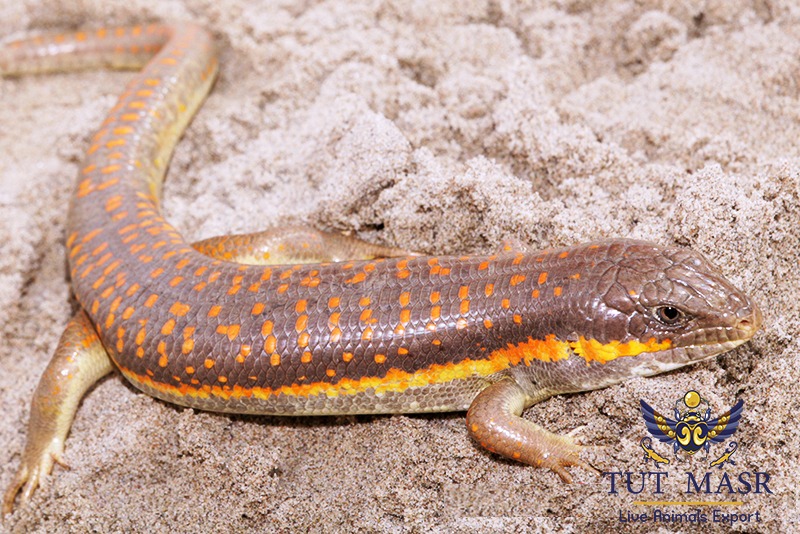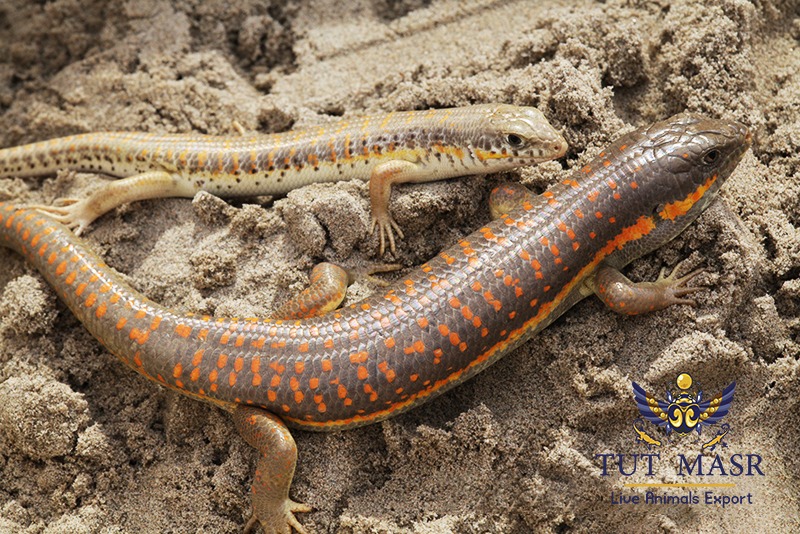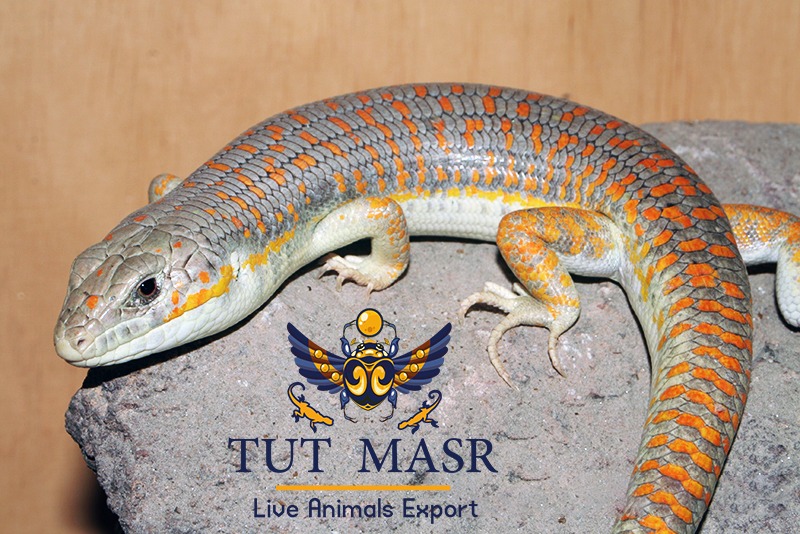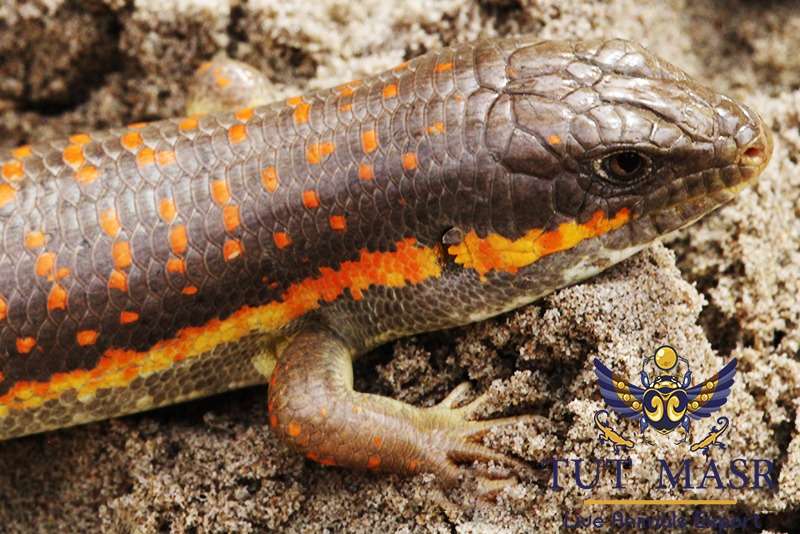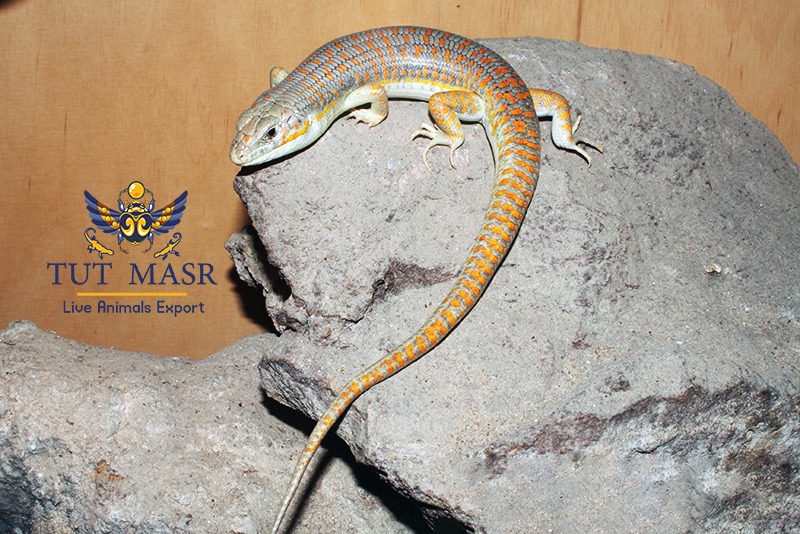The Ultimate Care Guide for Eumeces Schneideri
Expert Tips from Tut Masr!
Introduction " Eumeces Schneideri "
Eumeces Schneideri, commonly known as Schneider’s skink, is a fascinating reptile that is native to North Africa and parts of the Middle East. As a popular pet in the reptile trade, it is important for owners to have a comprehensive care guide to ensure the health and well-being of these unique creatures. In this article, we have gathered expert tips and advice from Tut Masr, a renowned exporter of exotic reptiles, to provide you with the ultimate care guide for Eumeces Schneideri. Whether you are a seasoned reptile owner or a beginner, this guide will equip you with the knowledge and expertise to properly care for your skink.
Understanding Eumeces Schneideri: The Basics
Eumeces Schneideri may be a popular pet choice, but it is crucial to understand the basics of this species before diving into their care. Schneider’s skinks are small to medium-sized lizards, growing up to 12 inches in length. They have a distinct appearance, with smooth scales and a slender body.
One essential aspect of understanding these skinks is their natural habitat. In the wild, Eumeces Schneideri is found in arid and rocky environments, which means that recreating a similar environment in captivity is vital for their well-being. This includes providing a spacious terrarium with appropriate temperature and humidity levels.
Additionally, Eumeces Schneideri is primarily insectivorous, relying mainly on a diet of small invertebrates such as crickets, mealworms, and silkworms. In their natural habitat, they also consume plant matter and fruits occasionally, which can be supplemented in their captive diet.
In the next section, we will delve further into the specific requirements for creating the perfect habitat for your Eumeces Schneideri. Stay tuned for expert advice on terrarium setup, temperature regulation, and more, courtesy of Tut Masr!
Creating the Perfect Habitat: Housing and Enclosure
In order to provide optimal care for your Eumeces Schneideri, it is crucial to provide them with a suitable housing and enclosure. This section will delve into the specific requirements to ensure your skink’s comfort and well-being.
First and foremost, consider the size of the enclosure. Schneider’s skinks are active lizards, so providing enough space for them to move around is essential. A 20-gallon terrarium is the minimum recommended size for one skink, but larger enclosures are always better. Keep in mind that these skinks are great climbers, so vertical space should be considered as well.
The materials used for the enclosure should be sturdy and easy to clean. Glass or PVC enclosures work best, as they provide the necessary insulation and allow for better control over temperature and humidity levels.
Creating a naturalistic and enriching habitat is also crucial. Decorate the enclosure with rocks, branches, and hides to mimic their natural environment. Providing hiding spots not only helps fulfill their natural behavioral needs but also helps them feel safe and secure.
In terms of substrate, avoid using loose substrates that can be ingested and cause impaction. Cypress mulch or reptile carpet are good options that provide a comfortable flooring for your skink.
Temperature and humidity regulation is of utmost importance in creating the perfect habitat for your Schneider’s skink. Maintain a thermal gradient by providing a temperature gradient within the enclosure. The warm end should be around 85-90°F, while the cool end should be around 75-80°F. Use a combination of under-tank heating pads and basking lights to achieve the desired temperature gradient.
Humidity levels should be kept between 40-60%. Mist the enclosure regularly and provide a humid hide to ensure your skink can properly shed its skin.
Stay tuned for the next section where we will discuss the importance of a nutritious diet for your Eumeces Schneideri. Tut Masr will share expert tips on feeding techniques, supplementation, and more!
Feeding Eumeces Schneideri: A Well-Balanced Diet
Now that you have set up the perfect habitat for your Eumeces Schneideri, it’s time to turn our attention to their diet. Providing a well-balanced and nutritious diet is crucial for the overall health and longevity of your skink.
In the wild, Schneider’s skinks primarily feed on insects, small invertebrates, and occasionally fruits and vegetation. To replicate their natural diet, it is recommended to offer a variety of prey items. This can include gut-loaded insects such as crickets, mealworms, and dubia roaches. Additionally, occasional treats such as wax worms or silkworms can be offered in moderation.
To ensure your skink receives all the necessary nutrients, it is important to provide a calcium and vitamin D3 supplement. Dusting the prey items with a reptile-specific calcium powder before feeding will help prevent calcium deficiencies and promote proper bone growth.
It is important to note that Schneider’s skinks are opportunistic feeders and can easily become overweight if overfed. A general rule of thumb is to offer appropriately sized food items that are no larger than the width of the skink’s head.
As with any reptile species, it is crucial to monitor their feeding behavior and adjust portion sizes accordingly. Regularly assess their body condition and consult with a reptile veterinarian if you have concerns about your skink’s weight.
In the next section, we will discuss the importance of providing mental stimulation and enrichment to keep your Eumeces Schneideri happy and healthy. Stay tuned for expert insights from Tut Masr!
Temperature and Humidity: Maintaining the Ideal Conditions
Creating the appropriate temperature and humidity levels in your Eumeces Schneideri’s habitat is crucial for their overall well-being. It is essential to provide a comfortable and stable environment that mimics their natural habitat.
Humidity levels should be kept relatively low, around 30-40%. This can be achieved by providing a dry substrate and proper ventilation in the enclosure. Avoiding excessive humidity will help prevent respiratory issues and skin infections.
Remember to regularly monitor the temperature and humidity levels using reliable equipment and make any necessary adjustments to ensure the optimal conditions for your Eumeces Schneideri.
In the next section, we will delve into the importance of providing proper hiding spots and substrate for your skink’s comfort and security. Stay tuned for expert insights from Tut Masr!
Handling and Care: Gentle Interactions and Health Check-ups
While Eumeces Schneideri may not be known for their social nature, it is still important to handle them with care to ensure their well-being. When interacting with your skink, it is crucial to approach them gently and avoid any sudden movements that might startle or stress them.
Start by allowing your skink to become accustomed to your presence before attempting to handle them. This can be done by spending time near their enclosure, talking softly to them, and offering treats. Building a sense of trust and familiarity will make the handling process less stressful for both you and your skink.
When handling your Eumeces Schneideri, it is essential to support their body properly and avoid squeezing or gripping them tightly. Use both hands to gently lift and hold your skink, making sure to support their body from underneath. Avoid touching their tail, as it may come off if they feel threatened.
Regular health check-ups are also crucial for ensuring the overall well-being of your skink. Monitoring their weight, checking for any abnormalities or signs of illness, and providing the necessary veterinary care are necessary for a long and healthy life.
In the following section, we will delve into the significance of providing a proper diet and nutrition for your Eumeces Schneideri. Stay tuned for expert insights from Tut Masr!
Common Health Issues and How to Address Them
Keeping your Eumeces Schneideri in good health requires being aware of common health issues that may affect them. While they are generally hardy reptiles, it is important to address any health concerns promptly to ensure their well-being.
One common health issue that Eumeces Schneideri may experience is shedding problems. Like other reptiles, skinks shed their skin periodically as they grow. However, sometimes they may have difficulty shedding their old skin, resulting in retained shed that can cause discomfort or even lead to infection.
To address shedding problems, provide a humid hide within their enclosure. This is a small sheltered area with higher humidity levels that can aid in the shedding process. Additionally, ensure that the enclosure has proper substrate and moisture levels to support healthy shedding.
Another health issue that may arise is respiratory infections. Eumeces Schneideri can be susceptible to respiratory problems if their enclosure is not maintained at the proper temperature and humidity. Signs of respiratory infections include wheezing, labored breathing, and nasal discharge.
If you notice any signs of a respiratory infection, it is crucial to consult a reptile veterinarian immediately. They can provide the appropriate treatment, which may include antibiotics or adjustments to the enclosure conditions.
Regularly checking your skink for any abnormalities or signs of illness is essential. Look out for changes in appetite, behavior, or appearance, as these can indicate potential health issues. If you notice any concerns, contact a reptile vet for professional advice.
In the next section, we will explore the fascinating world of breeding Eumeces Schneideri and provide essential tips for successful breeding. Stay tuned for Tut Masr’s expert insights on this topic!
Breeding and Reproduction: Ensuring a Successful Process
Breeding Eumeces Schneideri can be an exciting and rewarding experience for reptile enthusiasts. However, it is essential to have a thorough understanding of the breeding process to ensure a successful outcome. In this section, Tut Masr will provide expert insights and tips to help you navigate the world of breeding these fascinating reptiles.
Before attempting to breed your Eumeces Schneideri, it is important to ensure that both the male and female skinks are in optimal health. Take them to a reptile veterinarian for a thorough check-up and make any necessary adjustments to their diet and living conditions.
Creating the perfect environment for breeding is crucial. Provide your skinks with a spacious enclosure that includes hiding spots, branches, and heat sources. Maintain the proper temperature and humidity levels to stimulate breeding behavior.
Gaining a good understanding of your skinks’ mating behaviors is also essential. Eumeces Schneideri individuals are solitary animals, so it is important to introduce the male and female only during the breeding season. Observe their courtship rituals, which may include head bobbing, tail wagging, and biting, and monitor their interactions closely.
During the breeding process, it is important to supply a diet rich in calcium and vitamin D3 to ensure healthy egg production. Additionally, provide a suitable nesting area with a mix of damp soil and moss for the female skink to lay her eggs.
After successful mating, the female will lay a clutch of eggs. Ensure that the eggs are carefully incubated at the appropriate temperature and humidity levels to increase the chances of successful hatching. Monitor the incubation process closely and consult with experienced breeders or reptile veterinarians if you encounter any difficulties.
Breeding Eumeces Schneideri can be a complex process, but with proper preparation and attention to detail, it can be a highly rewarding experience. Stay tuned for Tut Masr’s expert tips on caring for and raising Eumeces Schneideri hatchlings in the next blog section!
Breeding and Reproduction: Ensuring a Successful Process
Breeding Eumeces Schneideri can be an exciting and rewarding experience for reptile enthusiasts. However, it is essential to have a thorough understanding of the breeding process to ensure a successful outcome. In this section, Tut Masr will provide expert insights and tips to help you navigate the world of breeding these fascinating reptiles.
Before attempting to breed your Eumeces Schneideri, it is important to ensure that both the male and female skinks are in optimal health. Take them to a reptile veterinarian for a thorough check-up and make any necessary adjustments to their diet and living conditions.
Creating the perfect environment for breeding is crucial. Provide your skinks with a spacious enclosure that includes hiding spots, branches, and heat sources. Maintain the proper temperature and humidity levels to stimulate breeding behavior.
Gaining a good understanding of your skinks’ mating behaviors is also essential. Eumeces Schneideri individuals are solitary animals, so it is important to introduce the male and female only during the breeding season. Observe their courtship rituals, which may include head bobbing, tail wagging, and biting, and monitor their interactions closely.
During the breeding process, it is important to supply a diet rich in calcium and vitamin D3 to ensure healthy egg production. Additionally, provide a suitable nesting area with a mix of damp soil and moss for the female skink to lay her eggs.
After successful mating, the female will lay a clutch of eggs. Ensure that the eggs are carefully incubated at the appropriate temperature and humidity levels to increase the chances of successful hatching. Monitor the incubation process closely and consult with experienced breeders or reptile veterinarians if you encounter any difficulties.
Breeding Eumeces Schneideri can be a complex process, but with proper preparation and attention to detail, it can be a highly rewarding experience. Stay tuned for Tut Masr’s expert tips on caring for and raising Eumeces Schneideri hatchlings in the next blog section!
